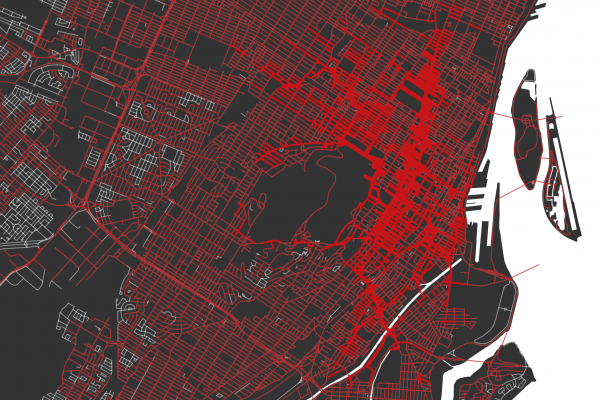We are in the midst of a technology-induced paradigm shift in transportation. Ride-hailing services, short-term car rentals, and autonomous vehicles are altering the transportation landscape. Within this environment, electric, dockless, scooter-sharing services are experiencing explosive growth and adoption in urban centers. Presented as a solution to the last-mile problem, privately funded scooter-share companies have inundated cities so quickly that municipal governments are struggling to evaluate the impacts on existing services, determine legality, and assess citizen safety.
In much the same way that ride-hailing services recently forced citizens and governments to re-evaluate urban transportation, this new mode of short-trip travel is again causing heated discussions at a municipal level. One program most likely affected by the influx of these scooter-share services is government-funded bike-sharing. These two services target a similar demographic of the urban population and bike-share programs often involve substantial financial investment in infrastructure and maintenance. For example, between 2011 and 2019, the City of Montreal, Canada, spent an estimated $62.2 million in taxpayer funds to support the BIXI bike-share program. Given the level of investment, and the desire of scooter-share companies to expand into new markets, it is worthwhile investigating scooter-sharing services further and assessing the differences between them and existing, subsidized, bike-sharing programs.
One of the issues facing cities is that few studies were conducted prior to the introduction of these scooter-share services. Many of these vehicles showed up on city streets without warning and the proprietary nature of the companies operating these services has limited external research opportunities. Questions still remain as to how these services are actually used and the overall impact that these scooter-share companies are currently having, and will continue to have on cities. While existing research has focused on a number of facets ranging from regulatory and economic concerns, to usage behavior and environmental impact to the best of our knowledge, little research has investigated the nuances of when and where people are using these scooters. Researchers from the Platial Analysis Lab are identify spatiotemporal usage patterns and comparing them to existing services such as bike-share, ride-hailing (Uber), car-sharing (Car2Go), and public transit services in a range of major urban centers.


